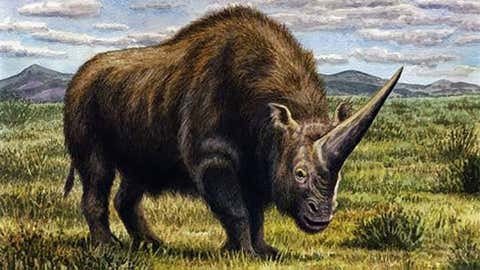
At a Glance
- A massive, hairy rhino known as the "Siberian unicorn" lived much longer than expected.
- A new study found the beast survived long enough to walk the Earth with humans.
- Scientists say a change in climate likely wiped out the species.
A massive, hairy rhinoceros nicknamed the "Siberian unicorn" lived much longer than previously believed and walked the Earth with humans, a new study claims.
By radiocarbon-dating 23 specimens of the rhinoceros, scientists were able to find the four-ton beast – not exactly what you picture when you think about a unicorn – survived in Eastern Europe and Central Asia until 39,000 years ago, around the same time as early modern humans and Neanderthals, according to new research in the journal Nature Ecology and Evolution.
Previously, scientists thought that the rhino, scientifically known as Elasmotherium sibericum, went extinct about 200,000 years ago.
(MORE: Report Reveals Harrowing Possibility in San Francisco's High-Rises)
Another key finding was that the extinction of the Siberian unicorn wasn't caused by human hunting or the last Ice Age, which started some 25,000 years ago. Instead, a subtle change in climate was its demise.

As the Earth began to warm and come out of an Ice Age that dates back to about 40,000 years ago, grasslands began to diminish in size and the rhino, which exclusively grazed on tough, dry grass, was likely pushed to extinction.
"Relatives such as the woolly rhino had always eaten a more balanced array of plants, and were much less impacted by a change in habitat," wrote the study's authors.
Today, only five of the 250 known species of rhino remain, three of which are listed as critically endangered by the International Union for Conservation of Nature. Very few rhinos live outside of national parks and reserves due to poaching and loss of habitat.
Scientists believe that studying the Siberian unicorn's extinction could help them save the rhinos remaining that face going extinct because of their stubbornness when picking a habitat.
"Any change in their environment is a danger for them," Adrian Lister, who led the study, told BBC News. "And, of course, what we've also learned from the fossil record is that once a species is gone, that's it, it's gone for good."



